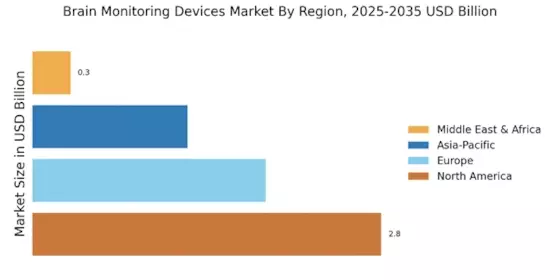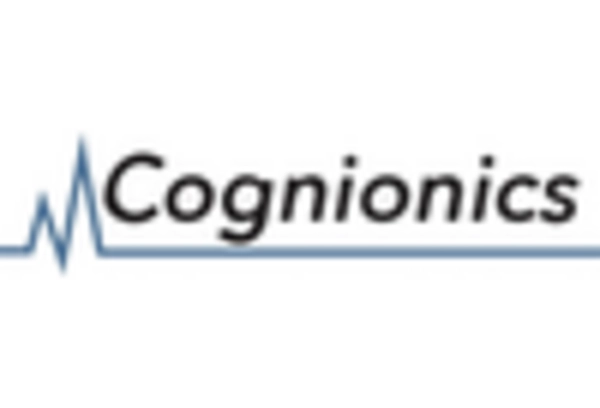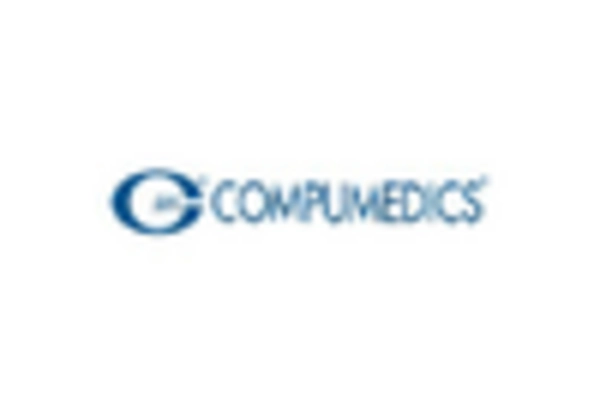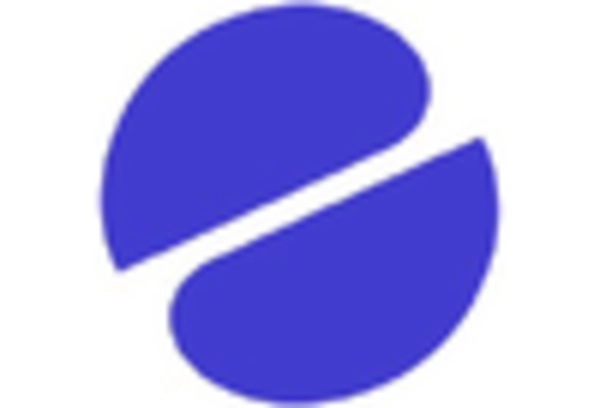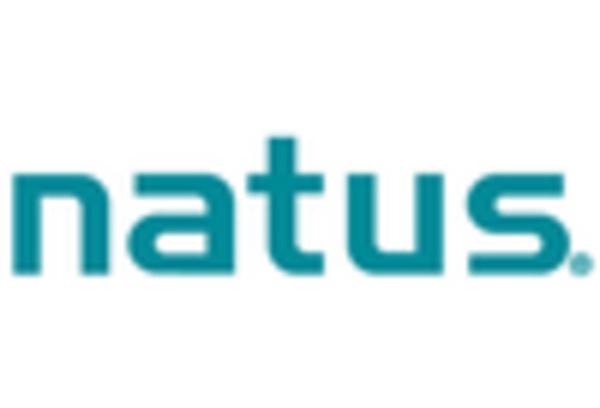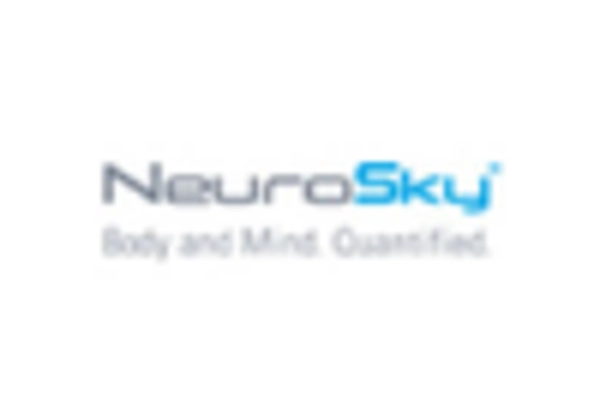Growing Demand for Personalized Medicine
The shift towards personalized medicine is significantly influencing the Brain Monitoring Market Devices Market. As healthcare moves away from a one-size-fits-all approach, there is a growing emphasis on tailored treatment strategies based on individual patient profiles. Brain monitoring devices play a crucial role in this paradigm shift by providing essential data that informs personalized treatment plans. The ability to monitor brain activity and responses allows for more accurate diagnoses and targeted therapies. This trend is further supported by the increasing awareness of the benefits of personalized healthcare, which is expected to drive demand for advanced brain monitoring solutions. Consequently, the Brain Monitoring Market Devices Market is likely to expand as healthcare providers seek to implement personalized approaches in their practices.
Rising Awareness of Mental Health Issues
The growing awareness of mental health issues is emerging as a crucial driver for the Brain Monitoring Market Devices Market. As society becomes more cognizant of the importance of mental health, there is an increasing demand for effective monitoring and treatment solutions. Brain monitoring devices are essential tools in assessing mental health conditions, enabling healthcare professionals to track brain activity and identify potential issues. This heightened awareness is likely to lead to greater investment in mental health services and technologies, further propelling the market. Additionally, public campaigns and educational initiatives are fostering a culture of openness regarding mental health, which may encourage individuals to seek help and utilize brain monitoring solutions. As a result, the Brain Monitoring Market Devices Market is expected to experience growth driven by this rising awareness.
Rising Prevalence of Neurological Disorders
The increasing incidence of neurological disorders such as epilepsy, Alzheimer's disease, and Parkinson's disease is a primary driver for the Brain Monitoring Market Devices Market. According to recent statistics, the prevalence of these conditions is expected to rise significantly, leading to a greater demand for effective monitoring solutions. As healthcare providers seek to improve patient outcomes, the need for advanced brain monitoring technologies becomes more pronounced. This trend is likely to propel the market forward, as innovative devices are developed to assist in the diagnosis and management of these disorders. Furthermore, the aging population is contributing to this rise, as older individuals are more susceptible to neurological issues. Consequently, the Brain Monitoring Market Devices Market is poised for substantial growth as it addresses these pressing healthcare challenges.
Technological Advancements in Monitoring Devices
Technological innovations are transforming the Brain Monitoring Market Devices Market, enhancing the capabilities and functionalities of monitoring devices. Recent advancements in neuroimaging techniques, such as functional MRI and EEG, have improved the accuracy and efficiency of brain monitoring. These technologies enable healthcare professionals to obtain real-time data, facilitating timely interventions and personalized treatment plans. Moreover, the integration of wearable devices and mobile applications is expanding the accessibility of brain monitoring solutions. As these technologies continue to evolve, they are likely to attract investment and drive market growth. The Brain Monitoring Market Devices Market is thus experiencing a shift towards more sophisticated and user-friendly devices, which could lead to increased adoption among both healthcare providers and patients.
Increased Investment in Healthcare Infrastructure
Investment in healthcare infrastructure is a significant driver for the Brain Monitoring Market Devices Market. Governments and private entities are allocating substantial resources to enhance healthcare facilities and services, particularly in developing regions. This investment is aimed at improving access to advanced medical technologies, including brain monitoring devices. As healthcare systems evolve, there is a growing recognition of the importance of early diagnosis and continuous monitoring of neurological conditions. Consequently, the demand for brain monitoring solutions is expected to rise, as healthcare providers seek to integrate these technologies into their practices. The Brain Monitoring Market Devices Market stands to benefit from this trend, as increased funding leads to the development and deployment of innovative monitoring devices.



